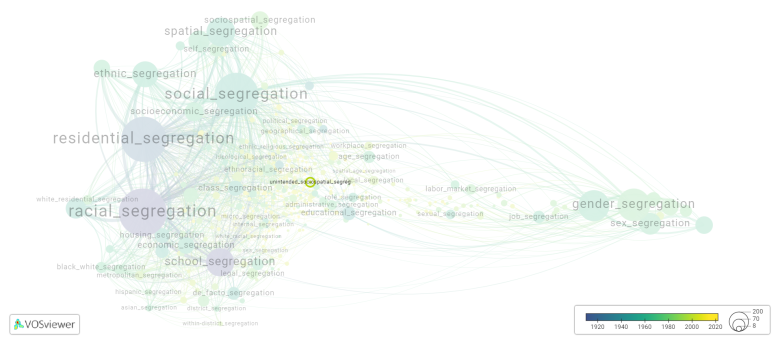Unintended sociospatial segregation: Difference between revisions
(Creating page) |
(Creating page) |
||
| Line 10: | Line 10: | ||
Efforts to address unintended sociospatial segregation often involve promoting inclusive and diversified housing policies, providing equal access to resources and services, and fostering opportunities for social interaction among different segments of the population. Implementing strategies to reduce socioeconomic disparities, eliminate discriminatory practices, and promote urban planning that facilitates social integration can contribute to creating more inclusive and equitable communities. | Efforts to address unintended sociospatial segregation often involve promoting inclusive and diversified housing policies, providing equal access to resources and services, and fostering opportunities for social interaction among different segments of the population. Implementing strategies to reduce socioeconomic disparities, eliminate discriminatory practices, and promote urban planning that facilitates social integration can contribute to creating more inclusive and equitable communities. | ||
==See also== | ==See also== | ||
==Related segregation forms== | |||
Unintended sociospatial segregation is frequently discussed in the literature with the following segregation forms: | |||
[[social segregation]], [[unintended segregation]] | |||
[[File:unintended_sociospatial_segregation.png|780x780px]] | |||
For the complete network of associated segregation forms, see: | |||
year of publication https://tinyurl.com/2235lkhw | |||
Louvain clusters https://tinyurl.com/2d8wg5n3 | |||
betweenness centrality https://tinyurl.com/223udk5r | |||
disciplines where segregation forms first appeared https://tinyurl.com/244d8unz | |||
==References== | ==References== | ||
==Notes== | ==Notes== | ||
Revision as of 14:39, 27 September 2024
Date and country of first publication[1]
2009
Australia
Definition
Unintended socio-spatial segregation refers to the unintentional separation of individuals or groups based on their social and economic characteristics in a particular geographical area. This type of segregation occurs when people with similar backgrounds or socioeconomic status tend to reside in the same neighborhoods or areas, leading to the creation of homogenous communities. It is typically a result of various societal factors such as housing policies, economic disparities, discriminatory practices, and personal preferences.
Unintended socio-spatial segregation can have significant consequences for individuals and communities. It can perpetuate inequalities, limit social mobility, and reinforce stereotypes and prejudices. In areas with high socio-spatial segregation, there may be limited access to quality education, healthcare, and other essential services for certain marginalized groups. Additionally, it can contribute to the social isolation and marginalization of individuals, leading to decreased social cohesion and a lack of understanding among different groups within society.
Efforts to address unintended sociospatial segregation often involve promoting inclusive and diversified housing policies, providing equal access to resources and services, and fostering opportunities for social interaction among different segments of the population. Implementing strategies to reduce socioeconomic disparities, eliminate discriminatory practices, and promote urban planning that facilitates social integration can contribute to creating more inclusive and equitable communities.
See also
Related segregation forms
Unintended sociospatial segregation is frequently discussed in the literature with the following segregation forms:
social segregation, unintended segregation

For the complete network of associated segregation forms, see:
year of publication https://tinyurl.com/2235lkhw
Louvain clusters https://tinyurl.com/2d8wg5n3
betweenness centrality https://tinyurl.com/223udk5r
disciplines where segregation forms first appeared https://tinyurl.com/244d8unz
References
Notes
- ↑ Date and country of first publication as informed by the Scopus database (December 2023).
At its current state, this definition has been generated by a Large Language Model (LLM) so far without review by an independent researcher or a member of the curating team of segregation experts that keep the Segregation Wiki online. While we strive for accuracy, we cannot guarantee its reliability, completeness and timeliness. Please use this content with caution and verify information as needed. Also, feel free to improve on the definition as you see fit, including the use of references and other informational resources. We value your input in enhancing the quality and accuracy of the definitions of segregation forms collectively offered in the Segregation Wiki ©.
Unintended sociospatial segregation appears in the following literature
Fincher R., Shaw K. (2009). The unintended segregation of transnational students in central Melbourne. Environment and Planning A, 41(8), 1884-1902. https://doi.org/10.1068/a41126
